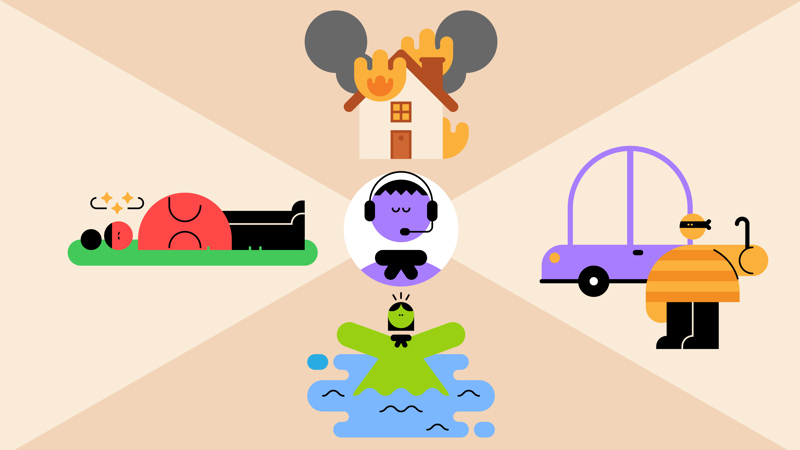
Say what you see
You’ll need
- Scissors
- Pens or pencils
- A4 paper
Before you begin
- Print enough 'Emergency services scenario cards' for everyone to have a scenario, and cut them out.
Play the game
- Split into pairs, and give each pair two different scenarios, two pieces of paper and some pens. Each player needs one of each.
- Each pair should choose one person to be the emergency caller. The other will be the call handler (the person whose job it is to answer emergency calls and send the right services to you).
- Each pair should sit back to back, so they can hear but not see each other.
- The caller should look at their scenario, and pretend to call 999.
- The caller should describe why they’re calling, where they are, and what has happened in as much detail as possible, so that the call handler can send the right emergency services to them.
- The call handler should try to remember all of the information they’re being given – they may need to pass it on to the emergency services. They should use their paper to note down the most important information.
- The call handler can ask questions if they think the caller has missed anything out or if they think they need more detail.
- Once the call has finished (in real life, this is usually when the emergency services arrive), both players should look at the call handler’s notes. Can the call handler remember the details?
- Pairs should swap roles, and play again with a different scenario.
Emergency services
When you call 999, they ask which emergency service you need. It could be an ambulance, the police, the fire service, the coastguard or mountain rescue.
If callers or call handlers get stuck, they may want to think about:
- Which emergency service do you need? It might be more than one. If you don’t know, you can tell the first person you speak to what’s happened.
- Where are you? The more detail you can give (including a postcode, if you can) the easier it is for the emergency services to reach you as fast as possible.
- What has happened – why do you need the emergency services?
- Who needs the emergency services – are they a grown up or a young person? What gender are they?
- Whether anyone is poorly – are they bleeding? Are they conscious (awake)? Where does it hurt?
Reflection
This activity needed you to communicate. When you were the caller, did you find it easy to give clear information? Was it easier when the call handler asked you questions? Was it easy to know what information was important? When you were the call handler, was it easy to listen and pick out the important details? What made your job easier? What makes a good call handler – what skills do you think people who do the job have?
This activity also helped you to develop skills. Would you know what to do if you needed to call 999 in real life? What should you remember when you call 999? Do you think you’d be able to keep calm in a real emergency? What other skills might be useful in a real emergency?
Safety
All activities must be safely managed. You must complete a thorough risk assessment and take appropriate steps to reduce risk. Use the safety checklist to help you plan and risk assess your activity. Always get approval for the activity, and have suitable supervision and an InTouch process.
- Scissors
Supervise young people appropriately when they’re using scissors. Store all sharp objects securely, out of the reach of young people.
Players don’t have to use the scenarios provided – they could make up their own. If you want to really up the challenge, why not have a small group act one out, for the caller to discover?
Speak to parents and guardians before this activity, in case anyone has experienced any of the issues you’ll be exploring. You may need to remove certain scenarios if anyone has experienced them, or you might need to change the scenarios so that they don’t involve an emergency – try directing your friend to find you in a busy park, or explaining exactly which items you’d like them to buy from the shop.
All Scout activities should be inclusive and accessible.

